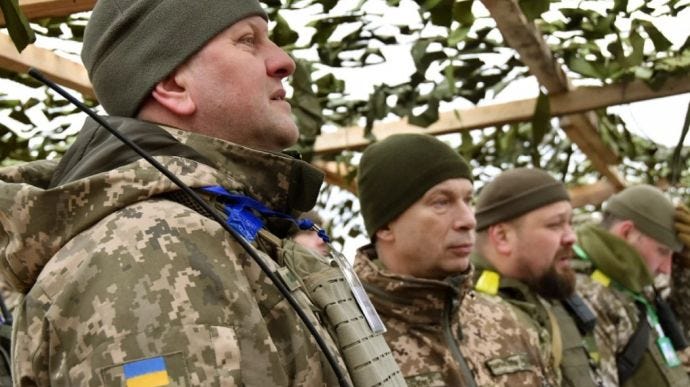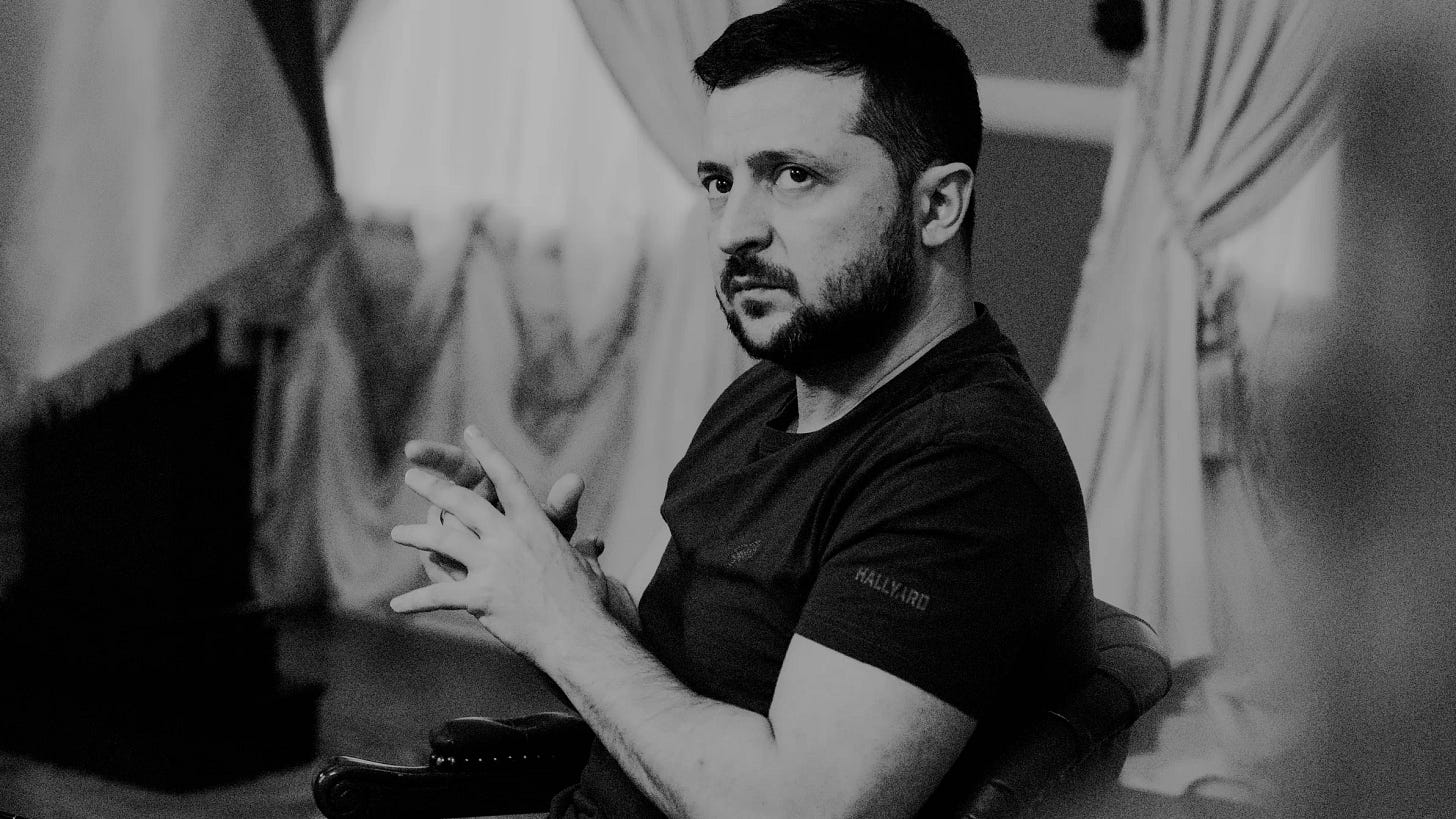Jun 4: Paul Niland, ‘Run, Surrender, Or Die: President Zelensky’s Greenlight for Ukraine’s Counteroffensive’
As published in Byline Times on June 2, 2023
‘Run, Surrender, Or Die: President Zelensky’s Greenlight for Ukraine’s Counteroffensive’
Vladimir Putin is in a catch-22: unable to win any kind of ‘victory’ that he can sell to his domestic audience, while creating folklore about this ‘special military operation’
By Paul Niland, Byline Times, 2 June 2023
Ukraine has had to maintain patience in the run-up to the counteroffensive that will dislodge Russian troops located on the territory of Ukraine. There have been several reasons for this delay.
Tanks and armoured vehicles are heavy and so the terrain conditions needed to be taken into account so as for them not to be bogged down in mud as the advances begin. The provision of the equipment has been done in a manner so that Ukraine has the required amount at the time of execution of the operation, but only a certain quantity of said vehicles could be physically delivered at any one time or absorbed by Ukraine’s army logistics.
Ukraine has also taken the time to properly prepare, with training and equipment, the troops that will participate in the counteroffensive. In addition, operations to shape the battlefield have been a necessary precursor prior to giving the order to attack.
Now Ukraine’s President, Volodymyr Zelensky, has declared that the time is right and the dates of the onslaught against the occupiers have been set. This leaves the Russian forces stationed in occupied parts of Ukraine with three simple options: run, surrender, or die.
No details of the counteroffensive have been made public. On the one hand, there is no value in telegraphing to the Russians what they can expect. On the other, there is immense psychological value in them being fully aware that it could happen at any point, in terms of timing or location, across the vast frontline along which they have insufficient manpower for effective defence.
Yes, the Russians are dug in. They have lines of trenches as well as other fortifications such as the ‘ dragon’s teeth’ concrete pyramids. However, as this tweet from the Ukrainian Defence Ministry quips, “if there are dragon teeth there must be a dragon dentist”, while the video shows the British-supplied Challenger II tanks pushing these obstacles aside with relative ease.
While another military expert has noted that Russia has roughly one-fifth of the manpower that NATO countries would estimate are needed for an effective defence of these lines, it is also important to consider the relative combat readiness of those forces and the forces that will soon be upon them.

Last February, Russia sent the best of its regular forces into Ukraine. They were beaten back from the gates of the capital, taking heavy losses. They were also resoundingly beaten in Kharkiv, again taking further significant losses. Vladimir Putin has found himself in a catch-22: unable to win any kind of ‘victory’ that he can sell to his domestic audience, while creating folklore about this ‘special military operation’ and the supposed necessity of it. He cannot back down so he chose to reinforce his beleaguered army in two major ways.
One tactic was the involvement of so-called ‘private military companies’ like the Wagner Group (which are actually illegal according to Russian law). While Wagner originally tried to build strength by hiring experienced soldiers on huge monthly salaries, not many men took up the $5,000 offer – one can only collect it while alive. Wagner took to recruiting from prisons instead. The bargain was a simple one: survive for six months and Putin would pardon and expunge your murder conviction from your records – and set you free.
Neither Wagner nor its leader, Yevgeny Prigozhin, are professional military – as their catastrophic losses in the senseless battle for Bakhmut have now proven. As a result, Wagner is now a spent force, and the frequent public arguments between Prigozhin and other elites in Russia have shown the fractures that exist in the highest echelons in Moscow.
The second gamble that Putin took was the mobilisation (a nicer word for conscription) of as many as 300,000 new soldiers into the ranks of the military. These men were notably poorly trained and equipped. The Russian President’s calculation here appears to be that, as Russia has massive human resources, he can fix his military problems by just throwing more men into the fight. It has been another bad mistake. You cannot create, or motivate, a professional fighting force in this way. Many of the mobilised men have also now been eliminated; those that remain are interspersed with some of the more professional military resources that Russia still has left, which leads to a general dilution of the overall skill of any fighting unit.
Ukraine, however, has built and trained new brigades – mostly of patriotic volunteers who have decided that now is the time that they must step forward to liberate their lands from enemy hands. The motivation of these men and women is not hard to discern. They will fight for the safety of their loved ones. These new brigades have been trained with one goal in mind: assault. And they have been given the tools they will need to carry out that mission by Ukraine’s numerous Western allies.
When the multiple offensives start, it will look like this. At both times and places of its choosing, Ukraine will launch a series of intense breakthrough operations to breach the enemy lines and trenches. To ensure the success of this phase of the war, we have seen weeks of missile strikes that have degraded Russia’s ability to supply its troops or coordinate its actions in battle, through long range precision targeting of troop concentrations, fuel and ammunition supply dumps, and command and control centres.
The first that the entrenched Russians will likely know that they are about to feel the wrath of the Ukrainian military is when they are engaged by drones carrying explosive charges. Then they will not only feel, but see, what is bearing down on their positions. The combined arms advances will be spearheaded by modern battle tanks like the British Challengers and the German Leopards. Together with numerous infantry fighting vehicles – which have also been supplied in abundance – armoured personnel carriers will deliver large numbers of infantry right on to the doorsteps of the under-manned Russian positions at precisely the points where Ukraine estimates them to be weakest.
At this point, two more factors will become critical factors in how the counteroffensive unfolds. The Ukrainian troops will be fresh, tens of thousands of them having just returned from training overseas. They will be ready for the push. Whereas their enemies will be exhausted both as individuals physically and in terms of numbers as a group. Then there is the question of what mission each side has as its goal. For the Russians, it is no more than trying to hold on. For the Ukrainians, it is the return of the lands that have constituted their country since they regained independence in 1991.
It will not be easy, but this is how the stage is set. With that colossal mismatch between the two sides, the Russians on the ground will find themselves limited to three options: run, surrender, or die.
Paul Niland is an Irish journalist based in Ukraine. He is the founder of the country’s national suicide prevention hotline, Lifeline Ukraine




